AUCTORES
Globalize your Research
Research Article | DOI: https://doi.org/10.31579/2693-7247/107
1 Department of pharmaceutical technology, School of Medical Sciences, Adamas University, Barasat, Kolkata-700126, West Bengal, India.
2 Department of Chemical Engineering, National Chung Cheng University, Chia-Yi, Taiwan 62102, ROC.
3 Department of Biotechnology, Bhupat and Jyoti Mehta School of Biosciences, IIT Madras, Chennai 600036, India.
*Corresponding Author: Sourav De, Department of Chemical Engineering, National Chung Cheng University, Chia-Yi, Taiwan 62102, ROC.
Citation: Tiyas Saha, Monosiz Rahaman, Aritra Saha, Sejuti Ray Chowdhury, Sourav De, et al (2022). An Assessment Report on The Symptoms Following Covid-19 Vaccinated Population. J. Pharmaceutics and Pharmacology Research, 5(9); DOI:10.31579/2693-7247/107
Copyright: © 2022 Sourav De, This is an open access article distributed under the Creative Commons Attribution License, which permits unrestricted use, distribution, and reproduction in any medium, provided the original work is properly cited.
Received: 28 October 2022 | Accepted: 10 November 2022 | Published: 23 November 2022
Keywords: covid-19; coronaviridae; covishield; covaxin; mers; remdesivir; sars
Objectives: The off-late emerged corona virus 2019 (COVID-19), which was brought by the severe acute respiratory syndrome coronavirus 2 (SARS-CoV-2) had a significant negative impact in human health. Multiple vaccines were developed and delivered in just one year after the epidemic began. The effectiveness of several new vaccinations significantly exceeded expectations, and there is a good chance that the COVID-19 will be nullified soon. However, several challenges still persist. The idea of advanced countries' vaccination programs is far developed means that the world's population will soon acquire protective immunity to this dreadful disease. Additionally, vaccine hesitancy is a major problem, particularly in young people who often deal with COVID-19 well and exhibit few to no symptoms. The remarkable side-effects related to the COVID-19 vaccine are well documented. In the present study, we focused on the determination of substantial side-effects observed after COVID-19 vaccination in local population of Kolkata region, West Bengal, India.
Methods: We have prepared the survey questionnaire in order to determine the side effects experienced by the people, who were vaccinated (1st or 2nd or both) against COVID-19. Due to the pandemic situation, it was difficult to conduct the survey by physical interaction with the people living in the Kolkata region of West Bengal. So, the survey was conducted via virtual mode through some social networking sites.
Key findings: The total number of candidates for this study was near to hundreds, from the Kolkata and its nearest areas. This survey will help us to find out the current scenario related to Covid-19 vaccination, and the survey is done in Kolkata region.
Conclusions: The survey will allow the readers to understand the efficacy of COVID-19 vaccines. The respondents experienced mild to severe side effects. However, the efficacies of COVID-19 vaccines were found to be good.
The Chinese health officials announced a pneumonia outbreak of unknown origin in Wuhan City, Hubei Province, on December 31, 2019. The National Authorities of China reported a total of 44 cases of pneumonia with an unknown cause to WHO between December 31, 2019, and January 3, 2020. Also, the National Health Commission China notified WHO of the outbreak's connection to exposures in a local seafood market in Wuhan City on January 11 and 12. Chinese authorities detected and recognized the novel coronavirus on January 7, 2020. China released the genetic profile of the Novel Corona Virus with other nations on January 12, 2020, so they could create specialized diagnostic tools. Four nations-China (278 cases), Thailand (2 cases), Japan (1 cases), and the Republic of Korea (1 case)-reported a total of 282 confirmed cases of 2019-nCoV to the World Health Organization on January 20, 2020. [1,2] This virus is a positive single-stranded RNA virus with an envelope, coronaviruses are members of the Coronaviridae family. They fall under four genera: coronavirus α, β, Ɣ and δ. A total of 7 human coronaviruses (HCoV), belonging to the Alpha and Beta coronavirus genera, have been identified so far. The Beta coronavirus genus comprises of HcoVOC43, HcoVHKU1, SARSCoV (severe acute respiratory syndrome coronavirus), MERSCoV (Middle East respiratory syndrome related coronavirus), and the novel SARSCoV2 severe respiratory syndrome 2), the Alphacoronavirus genus includes HCoVNL63 and HcoV229E. In addition to causing colds, the beta coronaviruses HcoVOC43 and HcoVHKU1 and the alpha coronaviruses HcoVNL63 and HcoV229E can also cause significant lower respiratory tract infections, particularly in elderly and young patients. Children's lower respiratory tract infections and laryngotracheitis have both been strongly linked to HCOVNL63 infection and HCOVOC43 infection, respectively. The zoonotic viruses SARS-CoV and MERS-CoV cause severe respiratory illness and frequently result in death. On November 26, the World Health Organization identified the newly found SARSCoV2 lineage B. 1.1. 529, a concerning variety of the Corona virus known as "Omicron," with 32 mutations in the single spike protein. [3-8]
Epidemiology
Symptoms- Patients with SARS-CoV-2 infection experience a wide variety of symptoms, from mild to severe ones like fever, cough, and shortness of breath. This symptom has been experienced by 31% of patients. According to certain studies, people who experience acute respiratory distress syndrome may quickly deteriorate and pass away from multiple organ failure. Additionally, it has been documented that 2-10% of Covid-19 patients experience gastrointestinal problems such nausea, vomiting, and abdominal pain. [9,10]
Transmission- SARSCoV2 transmission is still not completely understood. In a community that is exposed human-to-human droplet transmission is the primary method of transmission. The fecal-oral pathway is another potential method of viral transmission. According to scientific literature, SARSCoV and MERSCoV can survive in environments that encourage fecal-oral transmission. Wastewater from two Chinese hospitals that treated SARS patients contained the SARSCoV virus. [11,12]
Incubation Period- It is the period of time between when you were exposed to the outbreak and when your symptoms first appeared. According to the Centers for Disease Control and Prevention (CDC), the new coronavirus currently has an incubation period of two to fourteen days following exposure. According to a recent study, about 97% of people who were exposed to the SARS-CoV-2 virus experience symptoms within 11.5 days of exposure. Five days seems to be the average incubation time. This estimate could change, though, as we continue to learn more about the virus. Many persons with COVID-19 experience mild symptoms at first, which gradually worsen over a period of days. [13]
Outbreak and Affected Countries
The coronavirus (COVID19) pandemic, which began in China, is currently affecting the entire world. The most affected nations as of August 18, 2020, were the United States, Brazil, and India. Data is gathered from the Infectious Disease Vulnerability Index (IDVI), the World Health Organization (WHO), the World Bank, and the Brazilian Geography and Statistics Institute, and the Brazilian Geography and Statistics Institute (IBGE). Based on the indicator's sensitivity, flaws were identified. The countries with the highest populations on the world are China, India, and the countries with the highest risk were the United States, Brazil, and India and the lowest risk group is made up of Germany and New Zealand. SARS-CoV and MERS-CoV, which started as epidemics in China in 2003 and Saudi Arabia in 2012, respectively, and spread rapidly, are two examples of extremely pathogenic human CoVs that have seen in this century. catastrophic morbidity and mortality, spread to many other regions. So far in documented human history, the current COVID-19 outbreak is the third CoV outbreak. The first incidence of pneumonia with an unknown cause was reported to the Chinese National Health Commission on December 31, 2019. Wuhan's first fatal case occurred on January 15, 2020. While this was happening, the pandemic quickly spread to nearby cities, regions, and nations. On January 20, it was reported that a health worker had become infected, raising the possibility of human-to-human transmission. On January 23, Wuhan was reported to be in lockdown with all public transportation suspended. According to the initial clinical study of the illness, which was published on January 24, only 21 of the 41 patients with confirmed cases had contact with the Wuhan fish market, which is thought to be the origin of the animal-borne disease. The epidemic was considered as a global health emergency by WHO on January 30. The disease has already spread throughout China and nearly 50 other nations worldwide as of the time of this news. [14-17]
In order to determine whether COVID-19 vaccines are safe and whether receiving one can help protect individuals from getting the disease and passing away from this disease, we performed this survey.
Percentage of Vaccination
Globally, at least one dose of the COVID19 vaccine has been administered to 54.8% of the population. 8.12 billion doses were given out globally, and 35.52 million are still given out each day. In low-income nations, just 6.2% of people have received at least one dose. A sizable portion of the population must be immune to the virus in order to put a stop to this pandemic. A vaccination is the most secure approach to accomplish this. In the past, humanity has frequently used vaccines as a method to reduce the mortality toll from infectious diseases. Fewer than a year after the COVID19 pandemic began, numerous research teams stepped up to the plate and created vaccinations that guard against SARSCoV2, the virus that causes COVID19. Making these vaccines accessible to people worldwide is now the task. It will be essential that everyone, not just those in wealthy nations, has the protection they require. The information has been gathered from the global COVID-19 vaccination dataset to monitor this initiative (Figure 1).
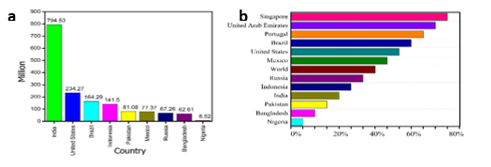
Figure 1: Vaccination rate of the total population of the world with Covid 19 vaccine a) total no. of vaccinated population b) percentage no. of vaccinated population
The total population who has received at least one dose of the COVID-19 vaccination is depicted in the graph above. If the vaccine requires two doses, this might not equal the total number of people who have been immunized. This metric goes up from 1 if a person receives the first dose of a two-dose vaccination. The metric stays the same if they get the second dose (Figure 2).

Figure 2: Breakdown of vaccinations among total population of world with partly or fully vaccinated
The distribution of vaccinations among persons who were either fully or partially immunized is depicted on the graph. If a person has only received one dosage of a recommended 2-dose vaccination schedule, they are regarded as partly immunized. If a person has gotten a single dosage of the vaccine or both doses of a two-dose vaccination, they are regarded as completely immunized. Only nations reporting the discontinuance of provided doses after the first and second dose have access to this data.
Present Situation of India
The country is the most severely affected in Asia, and it just surpassed Brazil to rank second after the United States in terms of the number of cases. On September 16, 2020, India saw its highest-ever one-day increase with 97,894 instances. Since the start of the pandemic, the increase represents the greatest daily cases in any nation in the globe. Maharashtra was the most severely affected state in the nation, followed by Karnataka, Andhra Pradesh, and Tamil Nadu, which had the fourth-highest number of infections. The state and federal governments were forced to offer relaxations starting on September 1, 2020, as a result of the gradual lifting of lockdown due to a number of region-specific factors, including poverty, labor migration, and economic stagnation. More than a case of lakh has been anticipated per day with unlock 4. 0. The number of cases per day is, however, steadily declining and has been since mid-September. Despite an increase in testing capacity, daily cases jumped from around one lakh to about 60,000 on October 31, 2020, and to 31,179 on November 30, 2020. In some areas of the nation, metro services have restarted after a five-month stoppage. Only asymptomatic people will be permitted to board the trains, with facemasks and social distance protocols being required. Indian citizens are still terrified and reluctant to resume their daily lives today. Although the COVID-19 infection curve in many Indian states has flattened, officials across the country are now worried about the start of a "second wave of infection" because of festival congestion and monsoon season. The Indian government has encouraged its citizens to use preventative measures including social distance and mask wear when attending public events. In addition, a few states, like Maharashtra, Rajasthan, Gujarat, etc., have implemented new travel restrictions and night curfews to combat a second wave. [18]
Vaccination of India
The distribution of vaccinations for people who were either fully or partially immunized is depicted on the graph. If a person has received only one dose of a two-dose vaccination regimen, they are regarded partially immunized; however, if a person has received both doses of a two-dose vaccination protocol, they are considered completely immunized (Figure 3 and Figure 4).
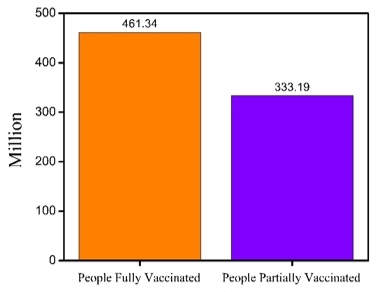
Figure 3: Breakdown of vaccinations in India with partly or fully vaccinated

Figure 4: The total number of COVID-19 vaccination doses administered
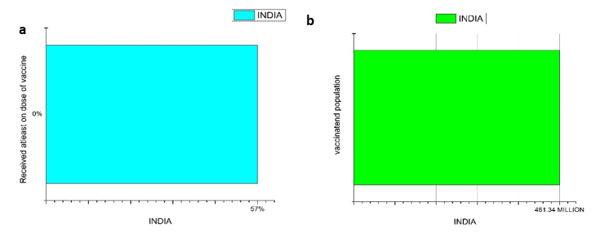
Figure 5: Total population of India COVID-19 vaccine a) Total population with one dose administered b) Total population with fully vaccinated against COVID-19
The percentage of the whole population that has received at least one dose of the COVID-19 vaccination is depicted in figure 5a. If the vaccination requires two doses, this cannot equal the proportion of those who are completely immune. This measure increases by 1 if a person receives the first dose of a 2-dose vaccination. The metric stays the same if they get the second dose. The percentage of the entire population that has been completely resistant to COVID-19 is depicted in figure 5b. This denotes the portion of the population that has gotten every dose recommended by the immunization regimen. This statistic does not change if a person just takes the first dose of a two-dose vaccination. The metric increases by 1 if they receive the second dose. [19]
General Side-effects related to COVID-19 Vaccination
The COVID-19 vaccine can help protect people from contracting the disease. Both adults and children may have some side effects from the vaccine, which are customary indicators that their body is fortifying its defenses. Although they must take a few days off from work to recover from these side effects, which may affect their capacity to perform daily tasks. Hypersensitive reactions are uncommon, and some people don't experience any negative effects. Following any immunization, including the COVID-19 vaccination, serious adverse effects that might result in long-term ill health are extremely improbable. According to several research, adverse reactions usually occur six weeks after taking a dosage of a vaccination. The U.S. Food and Drug Administration (FDA) gathered information on licensed COVID-19 vaccinations for a minimum of two months (eight weeks) prior to the final dosage for this reason. Even though the COVID-19 vaccines are presently in use, the CDC continuously monitors their effectiveness in preventing the disease. The most common side effects of covishield are soreness, redness, and swelling on the arm wherever you receive the shot. You may also experience fatigue, headache, muscle pain, chills, fever, and nausea. Some delicate symptoms include arthralgia, chills, pyrexia, myalgia, pain at the injection site, headache, exhaustion, and nausea. Following immunization, extremely uncommon demyelinating illnesses are reportable, and covaxin has some delicate symptoms. A number of AEFIs, including pain at the injection site, headache, fatigue, fever, body ache, abdominal discomfort, nausea, and vomiting, as well as disorientation, tremor, sweating, colds, and coughs, may also manifest. There have not been any additional major adverse reactions to vaccines recorded. When the second dose is administered after the first shot, some severe adverse effects may develop. Most of the time, discomfort from pain or fever may be a classic indicator that the body is fortifying its defences. If the redness or pain where the shot was administered worsens after twenty-four hours, consult a physician or care provider. [20]
Drug Therapy related to COVID-19
The range of medical treatments for coronavirus (COVID-19) is expanding and changing quickly, as are all drugs deemed safe and effective by the U.S. Food and Drug Administration (FDA) and medications made available under FDA emergency use authorization (EUA).
Remdesivir (Veklury) (Antiviral) - It was the first medication that the FDA has approved in October 2020 to treat the SARS-CoV-2 infection. Adults and children hospitalized with COVID-19 disease who weigh at least 40 kg and are at least 12 years old are advised to take it. A prodrug with a nucleotide analogue is the broad-spectrum antiviral. A strong headache, pounding in the neck or ears, fast, slow, or pounding heartbeats, difficulty breathing, swelling of the face, fever, chills, or shivering, itching, or a light-headed sensation that feels like passing out are some of the side effects. Nausea is one example of a typical adverse effect.
Molnupiravir (Antiviral)- According to a Merck study published in October 2021, using this medication associate in oral nursing medicine to treat COVID-19 has produced favourable results. People with mild to moderate COVID-19 who were at high risk for severe COVID experienced significantly lower hospitalisation and death rates when taking the antiviral medication molnupiravir compared to placebo.
Paxlovid (Oral antiviral)- The chances of COVID-related hospitalisation and mortality were significantly lower with Paxlovid than with a placebo, according to interim trial data released by Pfizer in a formal promulgation in the month of November 2021. The business intends to ask the government to approve the therapy.
Fluvoxamine (Luvox) (Antidepressant) -The medication fluvoxamine (Luvox), which can be taken orally at home, significantly lowers the probability of hospitalisation in select COVID-19 patients at considerable risk for severe disease, according to a study published in Lancet Global Health in October 2021. The medicine may have side effects similar to nausea, light-headedness, and insomnia.
Dexamethasone (Corticosteroids)-Since the start of the pandemic, several medical professionals, including those in the United States, have been administering corticosteroids to severely ill COVID-19 patients. For individuals who experienced a cytokine storm (a hyperimmune response) in reaction to a viral infection, this makes biological sense. In these situations, the immune system's overreaction is what harms the lungs and other organs and, all too frequently, results in death. Long-term use of corticosteroids administered for conditions other than COVID-19 results or hospitalisation risk were unaffected. [21,22]
Material and methods
Weprepared the surveyquestionnaire in order to determinethe side effectsexperienced by the people,who were vaccinated (1st or 2nd or both) againstCOVID-19. This survey will help us to find out the current scenario related to Covid-19 vaccination, and the survey is done in Kolkata region. The survey questions are as follows (Table 1):
| 1. Name of the Candidate * | |
| 2. Gender * | Male/Female |
| 3. Age category: * | Less than 20 years/20 – 29 years/30 – 39 years/40 – 49 years/50 – 59 years/60 years or more |
| 4. Place of residence: * | A city A town/A village |
| 5. Are you suffering from any of chronic diseases? *(You can select more than one choice and if you choose other, please specify) | No/Diabetes mellitus/Hypertension/Cardiovascular diseases/Chronic respiratory diseases /Thyroid disorders/Other |
| 6. Did you have a severe allergic reaction that required medical intervention? * | Yes/No |
| 7. Have you been vaccinated with COVID-19 vaccination? * | Yes/No |
| 8. Which type of COVID-19 vaccines did you received? * (If you choose other, please specify the name of the vaccine you take) | Covaxin/ Covishield/ None/Other |
| 9. How many doses have you received so far? | Single dose/Two doses |
| 10. Have you got infected with COVID-19 after vaccination? | Yes/No |
| 11. Have you noticed any symptoms following vaccination? | No symptoms at all /Yes, mild symptoms/Yes, moderate symptoms/ Yes, severe symptoms |
| 12. Did you noticed any of this symptom after getting Vaccinated? * (Please choose the option carefully and you can choose more than one option) | Fever/Pain or swelling at the injection site/Dizzy/Diarrhea/Nausea/Headache/Tiredness and fatigue/Irritation and allergic skin reactions, or itchy skin Cough/Decreased sleep/quality Joints pain/Muscle pain (myalgia)/Haziness or lack-of-clarity in your eyesight /Abdominal pain/Vomiting Bruises on body Bleeding gums/Numbness and tingling in limbs Runny nose/Dry throat/None |
| 13. Please write down if any other symptoms you have experienced: (optional) | |
| 14. How soon did the symptoms appear after taking COVID-19 vaccine? | Up to 4 hours 5 to 8 hours/9 to 12 hours/13 to 16 hours/17 to 20 hours/21 to 24 hours |
| 15. How long did the symptoms last? | Less than one day 1 to 3 days/4 to 7 days/More than 7 days |
| 16. How did you act to relieve the symptoms that appeared after vaccination? | I took rest at home/I took medicines and rested at home/I went to a doctor’s clinic, but there was no need for hospitalization/I have been admitted to a hospital/I received the required healthcare services |
| 17. Please write down the name of those medicines which you have taken to get relief from the symptoms: | |
| 18. Please write down those symptoms caused a visit to doctor or hospitalization: | |
Table 1. Survey Questionaries for determination of any side effects after post covid-19 vaccination
Due to the pandemic situation, it was difficult to conduct the survey by physical interaction with the people living in the Kolkata region of West Bengal. So, the survey was conducted via virtual mode through some social networking sites like LinkedIn, Gmail, Outlook, Facebook, Instagram, Twitter, Telegram etc.
Survey Report
The total number of candidates for this study was 54, from the Kolkata and its nearest areas.
Gender and Age Category
Total 54 responses were collected for this survey, where the Percentage of Male candidate is 63% and percentage of Female candidate is 37%. Majority of the responders are Male. Most of the responders lies under the age categoryof 20-29 years and the percentage is 92.6% and other few responders come under the age categories are less than 20 years is 3.7%, 30-39 years is 1.9% and 50-59 years is 1.9% (Figure 6).
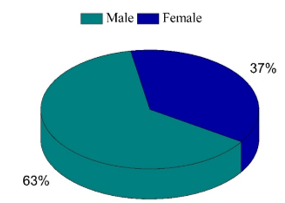
Figure 6: Percentage of Male and Female Responders
Place of Residence
For better understanding this question is used on the survey, it is very helpful to find out from which areas the responders are belongs. Because in many times it is very difficult to find any medical helps in less developed areas than the other developed areas. Majority of the responders belong from City and the percentage is 57.4%, the rest of my responders belong from town and village, the percentages are 24.1% and 18.5% (Figure 7).
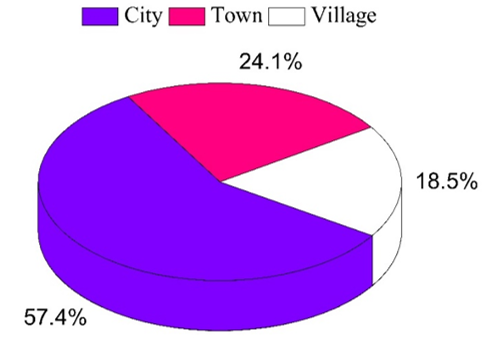
Figure 7: Responders with Place of Residence
Suffering with any Chronic Diseases
This question will help to find out any of the responders suffering from any kind of chronic diseases, because the medication for the chronic dieses may affect the Covid-19 vaccination. Most of the responder’s answeris No to this questionand the percentage is 94.4%. But few of them suffering from thyroid disease and fatty liver and the percentage is 3.7% and 1.9% (Figure 8).
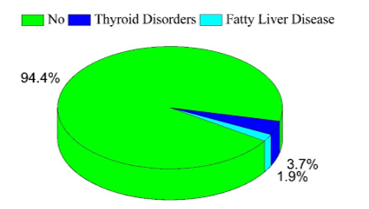
Figure 8: Responders with any chronic diseases
Any severe Allergic reaction that needs any medical intervention
This is an important question, because in many of the cases it occurs that due to some medication or any food people get allergies and some time it can be very deadly in nature. So, it is very important to find out that did the person suffering from any allergies before the vaccination then it will be easy to give vaccine without any problems and also the processbecame very safe. Most of my responders don’t have any severe allergic reaction they around 87% but the rest of the people have some severe allergic reactions (Figure 9).
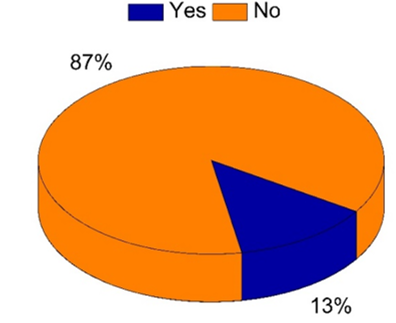
Figure 9: Responders with any allergic reaction
Vaccinated with Covid-19 Vaccination
All the responders were vaccinated.
Types of Covid-19 Vaccine received
This question will help to find out the types of vaccines for Covid 19 taken by the responders, in current market many brands are came with Covid 19 vaccines and in them mostly known names are covishield and covaxin, also there many vaccines are available except them. With this Question it is became very easy to identify that which one is mostly taken by the peoples. In this survey most of the people vaccinated with covishield and the percentage is 75.9% and the rest of the people get vaccinated with covaxin the percentage is 24.1% (Figure 10).

Figure 10: Covid-19 Vaccines received by People
Number of Doses have been received
The vaccination for Covid 19 is completed after taking 2 shots of the vaccine. There is a gap between the shots for anyone who has taken the vaccine for Covid 19. In case of covishield the gap between 2 shots is 84 days and for covaxin the gap is 28 days. This question will help us to find out how many people are fully vaccinated and how many are partially vaccinated means taken only one dose of the vaccine. From this survey it has received that most of the responders are fully vaccinated and the percentage is 86.8%, and the percentage for the partially vaccinated patients are 13.2% (Figure 11).

Figure 11: Responders with Vaccine Dose
Infected with Covid-19 after vaccination
It can help to identify the number of peoples who get infected even after Covid 19 vaccination. It is cleared from the responses that most of the responders don’t infect with Covid19 after vaccination and the percentage of this population is 94.4%, but in the other hand 5.6% of the survey responders get infected with Covid 19 after also been vaccinated (Figure 12).
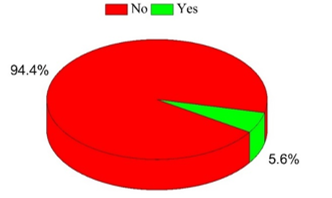
Figure 12: Responders with infection of COVID-19 after vaccination
Notice any Symptoms following Vaccination
It is a very common question and it can specify that after vaccination did anyone get any symptoms. This question is divided into 4 parts No, Mild, Moderate and Severe. With the help of this question, it can easily identify that anyone of responders get any symptoms or not after the vaccination. From the responses it is clearedthat majority of the people did not get any type of symptoms after the vaccination and the percentage of them is 46.3%, and the rest gettingmild and moderatesymptoms and the percentages are 40.7% and 13% (Figure 13).
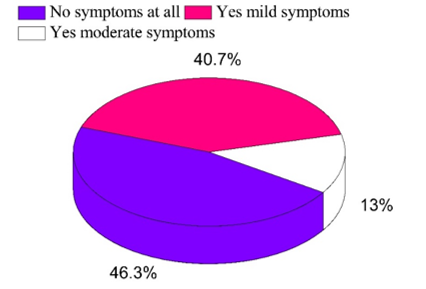
Figure 13: Symptoms following Vaccination
Any of the symptoms after getting Vaccinated
It is very important to find out the person who is been vaccinated get any kind of side effects, this question can easily help to find any person who get affected by any symptoms due to the Covid 19 vaccination. Among the collected responses from the survey majority of the people get fever after getting vaccinated and the percentage is 64.8%, then the second major side effect after getting vaccination is Pain or Swelling in the injection site and the percentage is 44.4%, the other major side-effects include Tiredness and fatigue, irritation and allergic skin reaction and the percentages are 29.6% and 27.8%, and 18.5% of the responded did not get any kind of side-effects. Also, the other minor symptoms include joint pain and muscle pain it is shown in 17% of the peoples. And the rest are having some symptoms like Nausea, dry throat, cough, abdominal pain and irritation and allergic skin reaction the percentages are 5.6%, 3.7%, and 1.9% (Figure 14).

Figure 14: Symptoms after getting vaccinated
How soon did the symptoms appear after taking COVID-19 vaccine?
After taking the vaccine how much time taken by the symptoms to appear is very important and it have to be documented immediately. From the responses it is documented that major of the symptoms appeared within 5 to 8 hours after getting vaccinated and the percentage is 48.9%, and the few of the responders getting the symptoms within 9 to 10 hours and within 4 hours and the percentages are 20% and 17.8%. Minor are getting the symptoms within 21 to 24 hours and 13 to 16 hours and the total percentage is 13.3% (Figure 15).

Figure 15: Symptoms appear after taking Covid-19 vaccine
How long did the symptoms last?
It is help full to find out that how much time the symptoms are visible means when the symptoms are gone and it can help to define that it disappears without any medication or not. From the responses it is shown that the symptoms disappear within less than one day or within 1 to 3 days and the percentage of this is around 97.8%.And the rest 2.2% having the symptoms gone within 4 to 7 days (Figure 16).

Figure 16: Time duration of the symptoms
Act to relieve the symptoms that appeared after vaccination
After getting side-effects from the vaccine how anyone react to get relief is also an important part to know. This question will help to find out the they react to the side- effects. From the responses it is proven that majority of the people taking rest at home and the percentage is 52.2% and rest of the rest of the people take medicine and rest at the home the percentage is 47.8% (Figure 17).
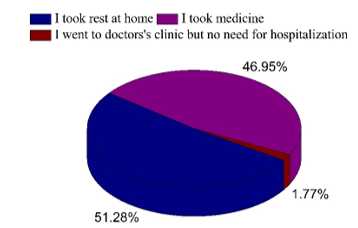
Figure 17: Act to relieve the symptoms that appeared after vaccination
Name of those medicines which you have taken to get relief from the symptoms
This is the most important question of the survey. This will help to find that which are the medicines help them to get relief after getting any side effects from the vaccine. From the studyit is shown that most of the persons take Paracetamol (Paracetamol 650, Calpol 650 and crosin) to get relief from the side-effects and the percentage is 78.1% and 16.3% of the responders did not take any medicament and rest at home and the rest of the responders take Antiallergic drug (Montair Lc) and Vitamin (Figure 18).
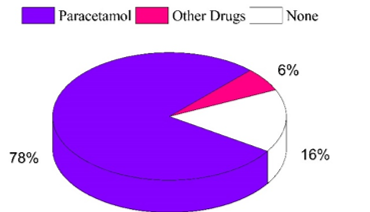
Figure 18: Medicines to get relief from the symptoms
Commonly, people are being hesitated to take vaccine due to fear and lack of authentic knowledge. This study shows adverse reaction with common side effects due to administration of first & second dose of vaccine where the symptoms were mild to moderate. Few side-effects were severe. It gives us the opportunity to recognize the efficacy of the above mentioned COVID-19 vaccines. The main purpose of this study is to find out and evaluate the effects of Covid-19 vaccines among a cluster of residence around Kolkata, west Bengal, India and its nearest regions, and the results may help us to understand the side effects related to COVID-19 vaccine and the methodical apposite approaches taken to deal with these symptoms.
Authors Contributions
Tiyas Saha‡, Monosiz Rahaman‡, Aritra Saha, Sejuti Ray Chowdhury, Debasmita Dutta Roy, Aditya Prasanna Mukherjee, Arijit Das - Conceptualization, Survey and Methodology
Mr. Suraj Kumar Shah, Dr. Bitasta Mandal, Dr. Nandan Sarkar and Dr. Sourav De- Investigation and Writing- Original draft preparation
Acknowledgments
The authors are grateful to the Department of Pharmaceutical Technology, School of Medical Sciences, Adamas University, India and National Chung Cheng University, Taiwan for supporting the work.
Conflicts of Interest
The authors declare no conflict of interest.
Funding
No funds were received for conducting this survey.
Clearly Auctoresonline and particularly Psychology and Mental Health Care Journal is dedicated to improving health care services for individuals and populations. The editorial boards' ability to efficiently recognize and share the global importance of health literacy with a variety of stakeholders. Auctoresonline publishing platform can be used to facilitate of optimal client-based services and should be added to health care professionals' repertoire of evidence-based health care resources.

Journal of Clinical Cardiology and Cardiovascular Intervention The submission and review process was adequate. However I think that the publication total value should have been enlightened in early fases. Thank you for all.

Journal of Women Health Care and Issues By the present mail, I want to say thank to you and tour colleagues for facilitating my published article. Specially thank you for the peer review process, support from the editorial office. I appreciate positively the quality of your journal.
Journal of Clinical Research and Reports I would be very delighted to submit my testimonial regarding the reviewer board and the editorial office. The reviewer board were accurate and helpful regarding any modifications for my manuscript. And the editorial office were very helpful and supportive in contacting and monitoring with any update and offering help. It was my pleasure to contribute with your promising Journal and I am looking forward for more collaboration.

We would like to thank the Journal of Thoracic Disease and Cardiothoracic Surgery because of the services they provided us for our articles. The peer-review process was done in a very excellent time manner, and the opinions of the reviewers helped us to improve our manuscript further. The editorial office had an outstanding correspondence with us and guided us in many ways. During a hard time of the pandemic that is affecting every one of us tremendously, the editorial office helped us make everything easier for publishing scientific work. Hope for a more scientific relationship with your Journal.
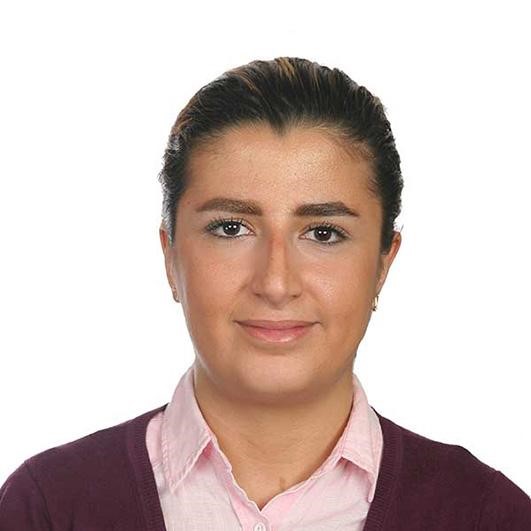
The peer-review process which consisted high quality queries on the paper. I did answer six reviewers’ questions and comments before the paper was accepted. The support from the editorial office is excellent.

Journal of Neuroscience and Neurological Surgery. I had the experience of publishing a research article recently. The whole process was simple from submission to publication. The reviewers made specific and valuable recommendations and corrections that improved the quality of my publication. I strongly recommend this Journal.
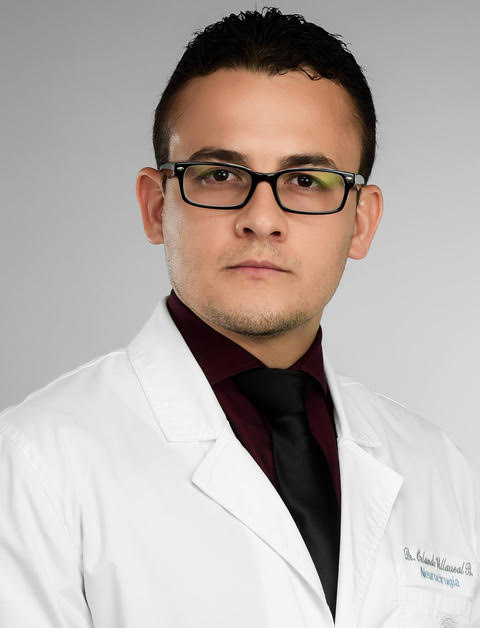
Dr. Katarzyna Byczkowska My testimonial covering: "The peer review process is quick and effective. The support from the editorial office is very professional and friendly. Quality of the Clinical Cardiology and Cardiovascular Interventions is scientific and publishes ground-breaking research on cardiology that is useful for other professionals in the field.

Thank you most sincerely, with regard to the support you have given in relation to the reviewing process and the processing of my article entitled "Large Cell Neuroendocrine Carcinoma of The Prostate Gland: A Review and Update" for publication in your esteemed Journal, Journal of Cancer Research and Cellular Therapeutics". The editorial team has been very supportive.
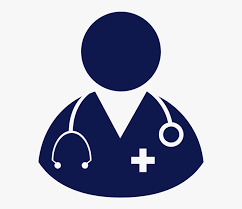
Testimony of Journal of Clinical Otorhinolaryngology: work with your Reviews has been a educational and constructive experience. The editorial office were very helpful and supportive. It was a pleasure to contribute to your Journal.

Dr. Bernard Terkimbi Utoo, I am happy to publish my scientific work in Journal of Women Health Care and Issues (JWHCI). The manuscript submission was seamless and peer review process was top notch. I was amazed that 4 reviewers worked on the manuscript which made it a highly technical, standard and excellent quality paper. I appreciate the format and consideration for the APC as well as the speed of publication. It is my pleasure to continue with this scientific relationship with the esteem JWHCI.

This is an acknowledgment for peer reviewers, editorial board of Journal of Clinical Research and Reports. They show a lot of consideration for us as publishers for our research article “Evaluation of the different factors associated with side effects of COVID-19 vaccination on medical students, Mutah university, Al-Karak, Jordan”, in a very professional and easy way. This journal is one of outstanding medical journal.
Dear Hao Jiang, to Journal of Nutrition and Food Processing We greatly appreciate the efficient, professional and rapid processing of our paper by your team. If there is anything else we should do, please do not hesitate to let us know. On behalf of my co-authors, we would like to express our great appreciation to editor and reviewers.

As an author who has recently published in the journal "Brain and Neurological Disorders". I am delighted to provide a testimonial on the peer review process, editorial office support, and the overall quality of the journal. The peer review process at Brain and Neurological Disorders is rigorous and meticulous, ensuring that only high-quality, evidence-based research is published. The reviewers are experts in their fields, and their comments and suggestions were constructive and helped improve the quality of my manuscript. The review process was timely and efficient, with clear communication from the editorial office at each stage. The support from the editorial office was exceptional throughout the entire process. The editorial staff was responsive, professional, and always willing to help. They provided valuable guidance on formatting, structure, and ethical considerations, making the submission process seamless. Moreover, they kept me informed about the status of my manuscript and provided timely updates, which made the process less stressful. The journal Brain and Neurological Disorders is of the highest quality, with a strong focus on publishing cutting-edge research in the field of neurology. The articles published in this journal are well-researched, rigorously peer-reviewed, and written by experts in the field. The journal maintains high standards, ensuring that readers are provided with the most up-to-date and reliable information on brain and neurological disorders. In conclusion, I had a wonderful experience publishing in Brain and Neurological Disorders. The peer review process was thorough, the editorial office provided exceptional support, and the journal's quality is second to none. I would highly recommend this journal to any researcher working in the field of neurology and brain disorders.

Dear Agrippa Hilda, Journal of Neuroscience and Neurological Surgery, Editorial Coordinator, I trust this message finds you well. I want to extend my appreciation for considering my article for publication in your esteemed journal. I am pleased to provide a testimonial regarding the peer review process and the support received from your editorial office. The peer review process for my paper was carried out in a highly professional and thorough manner. The feedback and comments provided by the authors were constructive and very useful in improving the quality of the manuscript. This rigorous assessment process undoubtedly contributes to the high standards maintained by your journal.

International Journal of Clinical Case Reports and Reviews. I strongly recommend to consider submitting your work to this high-quality journal. The support and availability of the Editorial staff is outstanding and the review process was both efficient and rigorous.

Thank you very much for publishing my Research Article titled “Comparing Treatment Outcome Of Allergic Rhinitis Patients After Using Fluticasone Nasal Spray And Nasal Douching" in the Journal of Clinical Otorhinolaryngology. As Medical Professionals we are immensely benefited from study of various informative Articles and Papers published in this high quality Journal. I look forward to enriching my knowledge by regular study of the Journal and contribute my future work in the field of ENT through the Journal for use by the medical fraternity. The support from the Editorial office was excellent and very prompt. I also welcome the comments received from the readers of my Research Article.
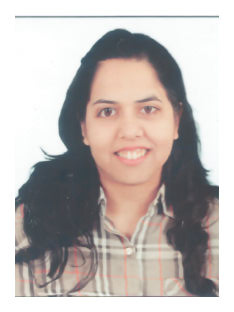
Dear Erica Kelsey, Editorial Coordinator of Cancer Research and Cellular Therapeutics Our team is very satisfied with the processing of our paper by your journal. That was fast, efficient, rigorous, but without unnecessary complications. We appreciated the very short time between the submission of the paper and its publication on line on your site.

I am very glad to say that the peer review process is very successful and fast and support from the Editorial Office. Therefore, I would like to continue our scientific relationship for a long time. And I especially thank you for your kindly attention towards my article. Have a good day!

"We recently published an article entitled “Influence of beta-Cyclodextrins upon the Degradation of Carbofuran Derivatives under Alkaline Conditions" in the Journal of “Pesticides and Biofertilizers” to show that the cyclodextrins protect the carbamates increasing their half-life time in the presence of basic conditions This will be very helpful to understand carbofuran behaviour in the analytical, agro-environmental and food areas. We greatly appreciated the interaction with the editor and the editorial team; we were particularly well accompanied during the course of the revision process, since all various steps towards publication were short and without delay".

I would like to express my gratitude towards you process of article review and submission. I found this to be very fair and expedient. Your follow up has been excellent. I have many publications in national and international journal and your process has been one of the best so far. Keep up the great work.

We are grateful for this opportunity to provide a glowing recommendation to the Journal of Psychiatry and Psychotherapy. We found that the editorial team were very supportive, helpful, kept us abreast of timelines and over all very professional in nature. The peer review process was rigorous, efficient and constructive that really enhanced our article submission. The experience with this journal remains one of our best ever and we look forward to providing future submissions in the near future.

I am very pleased to serve as EBM of the journal, I hope many years of my experience in stem cells can help the journal from one way or another. As we know, stem cells hold great potential for regenerative medicine, which are mostly used to promote the repair response of diseased, dysfunctional or injured tissue using stem cells or their derivatives. I think Stem Cell Research and Therapeutics International is a great platform to publish and share the understanding towards the biology and translational or clinical application of stem cells.

I would like to give my testimony in the support I have got by the peer review process and to support the editorial office where they were of asset to support young author like me to be encouraged to publish their work in your respected journal and globalize and share knowledge across the globe. I really give my great gratitude to your journal and the peer review including the editorial office.

I am delighted to publish our manuscript entitled "A Perspective on Cocaine Induced Stroke - Its Mechanisms and Management" in the Journal of Neuroscience and Neurological Surgery. The peer review process, support from the editorial office, and quality of the journal are excellent. The manuscripts published are of high quality and of excellent scientific value. I recommend this journal very much to colleagues.

Dr.Tania Muñoz, My experience as researcher and author of a review article in The Journal Clinical Cardiology and Interventions has been very enriching and stimulating. The editorial team is excellent, performs its work with absolute responsibility and delivery. They are proactive, dynamic and receptive to all proposals. Supporting at all times the vast universe of authors who choose them as an option for publication. The team of review specialists, members of the editorial board, are brilliant professionals, with remarkable performance in medical research and scientific methodology. Together they form a frontline team that consolidates the JCCI as a magnificent option for the publication and review of high-level medical articles and broad collective interest. I am honored to be able to share my review article and open to receive all your comments.

“The peer review process of JPMHC is quick and effective. Authors are benefited by good and professional reviewers with huge experience in the field of psychology and mental health. The support from the editorial office is very professional. People to contact to are friendly and happy to help and assist any query authors might have. Quality of the Journal is scientific and publishes ground-breaking research on mental health that is useful for other professionals in the field”.

Dear editorial department: On behalf of our team, I hereby certify the reliability and superiority of the International Journal of Clinical Case Reports and Reviews in the peer review process, editorial support, and journal quality. Firstly, the peer review process of the International Journal of Clinical Case Reports and Reviews is rigorous, fair, transparent, fast, and of high quality. The editorial department invites experts from relevant fields as anonymous reviewers to review all submitted manuscripts. These experts have rich academic backgrounds and experience, and can accurately evaluate the academic quality, originality, and suitability of manuscripts. The editorial department is committed to ensuring the rigor of the peer review process, while also making every effort to ensure a fast review cycle to meet the needs of authors and the academic community. Secondly, the editorial team of the International Journal of Clinical Case Reports and Reviews is composed of a group of senior scholars and professionals with rich experience and professional knowledge in related fields. The editorial department is committed to assisting authors in improving their manuscripts, ensuring their academic accuracy, clarity, and completeness. Editors actively collaborate with authors, providing useful suggestions and feedback to promote the improvement and development of the manuscript. We believe that the support of the editorial department is one of the key factors in ensuring the quality of the journal. Finally, the International Journal of Clinical Case Reports and Reviews is renowned for its high- quality articles and strict academic standards. The editorial department is committed to publishing innovative and academically valuable research results to promote the development and progress of related fields. The International Journal of Clinical Case Reports and Reviews is reasonably priced and ensures excellent service and quality ratio, allowing authors to obtain high-level academic publishing opportunities in an affordable manner. I hereby solemnly declare that the International Journal of Clinical Case Reports and Reviews has a high level of credibility and superiority in terms of peer review process, editorial support, reasonable fees, and journal quality. Sincerely, Rui Tao.

Clinical Cardiology and Cardiovascular Interventions I testity the covering of the peer review process, support from the editorial office, and quality of the journal.

Clinical Cardiology and Cardiovascular Interventions, we deeply appreciate the interest shown in our work and its publication. It has been a true pleasure to collaborate with you. The peer review process, as well as the support provided by the editorial office, have been exceptional, and the quality of the journal is very high, which was a determining factor in our decision to publish with you.
The peer reviewers process is quick and effective, the supports from editorial office is excellent, the quality of journal is high. I would like to collabroate with Internatioanl journal of Clinical Case Reports and Reviews journal clinically in the future time.

Clinical Cardiology and Cardiovascular Interventions, I would like to express my sincerest gratitude for the trust placed in our team for the publication in your journal. It has been a true pleasure to collaborate with you on this project. I am pleased to inform you that both the peer review process and the attention from the editorial coordination have been excellent. Your team has worked with dedication and professionalism to ensure that your publication meets the highest standards of quality. We are confident that this collaboration will result in mutual success, and we are eager to see the fruits of this shared effort.

Dear Dr. Jessica Magne, Editorial Coordinator 0f Clinical Cardiology and Cardiovascular Interventions, I hope this message finds you well. I want to express my utmost gratitude for your excellent work and for the dedication and speed in the publication process of my article titled "Navigating Innovation: Qualitative Insights on Using Technology for Health Education in Acute Coronary Syndrome Patients." I am very satisfied with the peer review process, the support from the editorial office, and the quality of the journal. I hope we can maintain our scientific relationship in the long term.
Dear Monica Gissare, - Editorial Coordinator of Nutrition and Food Processing. ¨My testimony with you is truly professional, with a positive response regarding the follow-up of the article and its review, you took into account my qualities and the importance of the topic¨.

Dear Dr. Jessica Magne, Editorial Coordinator 0f Clinical Cardiology and Cardiovascular Interventions, The review process for the article “The Handling of Anti-aggregants and Anticoagulants in the Oncologic Heart Patient Submitted to Surgery” was extremely rigorous and detailed. From the initial submission to the final acceptance, the editorial team at the “Journal of Clinical Cardiology and Cardiovascular Interventions” demonstrated a high level of professionalism and dedication. The reviewers provided constructive and detailed feedback, which was essential for improving the quality of our work. Communication was always clear and efficient, ensuring that all our questions were promptly addressed. The quality of the “Journal of Clinical Cardiology and Cardiovascular Interventions” is undeniable. It is a peer-reviewed, open-access publication dedicated exclusively to disseminating high-quality research in the field of clinical cardiology and cardiovascular interventions. The journal's impact factor is currently under evaluation, and it is indexed in reputable databases, which further reinforces its credibility and relevance in the scientific field. I highly recommend this journal to researchers looking for a reputable platform to publish their studies.
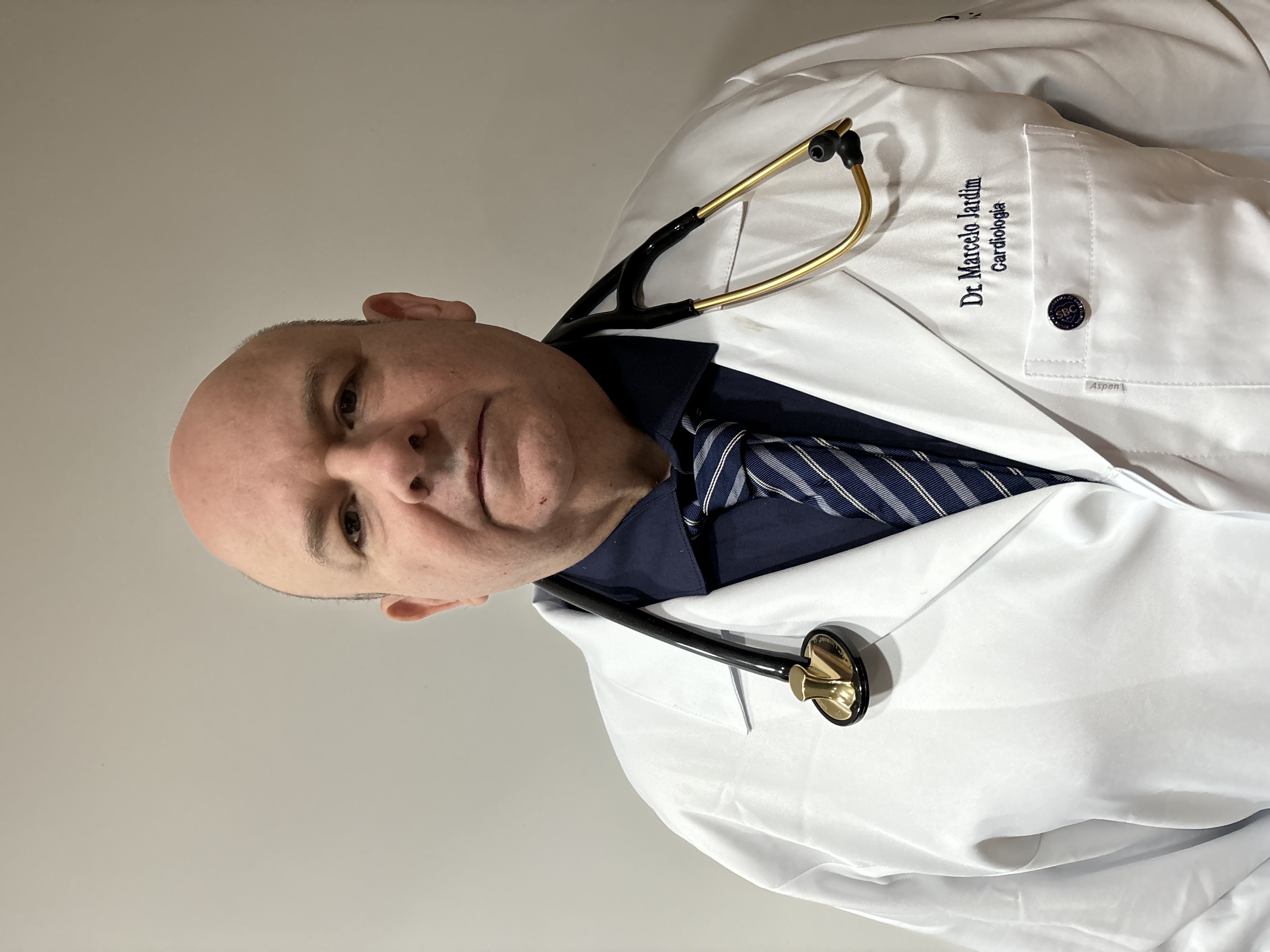
Dear Editorial Coordinator of the Journal of Nutrition and Food Processing! "I would like to thank the Journal of Nutrition and Food Processing for including and publishing my article. The peer review process was very quick, movement and precise. The Editorial Board has done an extremely conscientious job with much help, valuable comments and advices. I find the journal very valuable from a professional point of view, thank you very much for allowing me to be part of it and I would like to participate in the future!”

Dealing with The Journal of Neurology and Neurological Surgery was very smooth and comprehensive. The office staff took time to address my needs and the response from editors and the office was prompt and fair. I certainly hope to publish with this journal again.Their professionalism is apparent and more than satisfactory. Susan Weiner
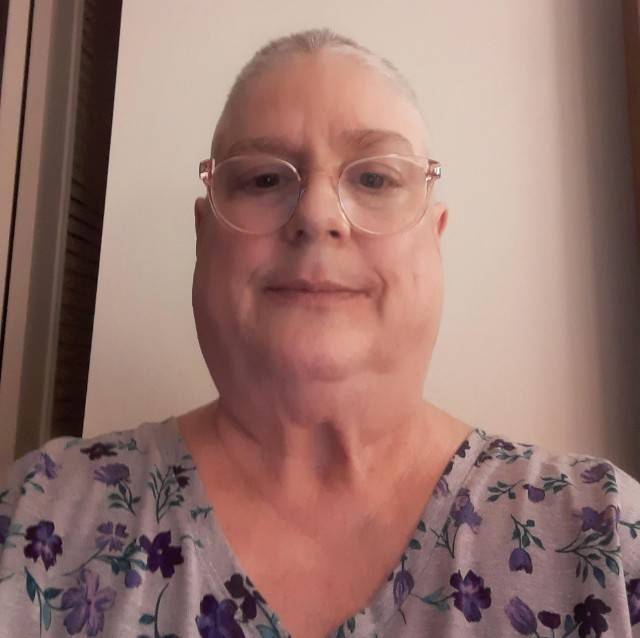
My Testimonial Covering as fellowing: Lin-Show Chin. The peer reviewers process is quick and effective, the supports from editorial office is excellent, the quality of journal is high. I would like to collabroate with Internatioanl journal of Clinical Case Reports and Reviews.

My experience publishing in Psychology and Mental Health Care was exceptional. The peer review process was rigorous and constructive, with reviewers providing valuable insights that helped enhance the quality of our work. The editorial team was highly supportive and responsive, making the submission process smooth and efficient. The journal's commitment to high standards and academic rigor makes it a respected platform for quality research. I am grateful for the opportunity to publish in such a reputable journal.
My experience publishing in International Journal of Clinical Case Reports and Reviews was exceptional. I Come forth to Provide a Testimonial Covering the Peer Review Process and the editorial office for the Professional and Impartial Evaluation of the Manuscript.
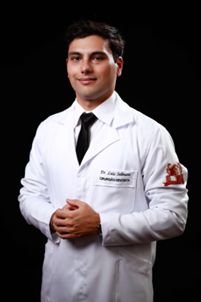
I would like to offer my testimony in the support. I have received through the peer review process and support the editorial office where they are to support young authors like me, encourage them to publish their work in your esteemed journals, and globalize and share knowledge globally. I really appreciate your journal, peer review, and editorial office.
Dear Agrippa Hilda- Editorial Coordinator of Journal of Neuroscience and Neurological Surgery, "The peer review process was very quick and of high quality, which can also be seen in the articles in the journal. The collaboration with the editorial office was very good."

I would like to express my sincere gratitude for the support and efficiency provided by the editorial office throughout the publication process of my article, “Delayed Vulvar Metastases from Rectal Carcinoma: A Case Report.” I greatly appreciate the assistance and guidance I received from your team, which made the entire process smooth and efficient. The peer review process was thorough and constructive, contributing to the overall quality of the final article. I am very grateful for the high level of professionalism and commitment shown by the editorial staff, and I look forward to maintaining a long-term collaboration with the International Journal of Clinical Case Reports and Reviews.
To Dear Erin Aust, I would like to express my heartfelt appreciation for the opportunity to have my work published in this esteemed journal. The entire publication process was smooth and well-organized, and I am extremely satisfied with the final result. The Editorial Team demonstrated the utmost professionalism, providing prompt and insightful feedback throughout the review process. Their clear communication and constructive suggestions were invaluable in enhancing my manuscript, and their meticulous attention to detail and dedication to quality are truly commendable. Additionally, the support from the Editorial Office was exceptional. From the initial submission to the final publication, I was guided through every step of the process with great care and professionalism. The team's responsiveness and assistance made the entire experience both easy and stress-free. I am also deeply impressed by the quality and reputation of the journal. It is an honor to have my research featured in such a respected publication, and I am confident that it will make a meaningful contribution to the field.

"I am grateful for the opportunity of contributing to [International Journal of Clinical Case Reports and Reviews] and for the rigorous review process that enhances the quality of research published in your esteemed journal. I sincerely appreciate the time and effort of your team who have dedicatedly helped me in improvising changes and modifying my manuscript. The insightful comments and constructive feedback provided have been invaluable in refining and strengthening my work".
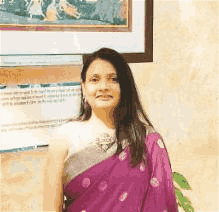
I thank the ‘Journal of Clinical Research and Reports’ for accepting this article for publication. This is a rigorously peer reviewed journal which is on all major global scientific data bases. I note the review process was prompt, thorough and professionally critical. It gave us an insight into a number of important scientific/statistical issues. The review prompted us to review the relevant literature again and look at the limitations of the study. The peer reviewers were open, clear in the instructions and the editorial team was very prompt in their communication. This journal certainly publishes quality research articles. I would recommend the journal for any future publications.

Dear Jessica Magne, with gratitude for the joint work. Fast process of receiving and processing the submitted scientific materials in “Clinical Cardiology and Cardiovascular Interventions”. High level of competence of the editors with clear and correct recommendations and ideas for enriching the article.
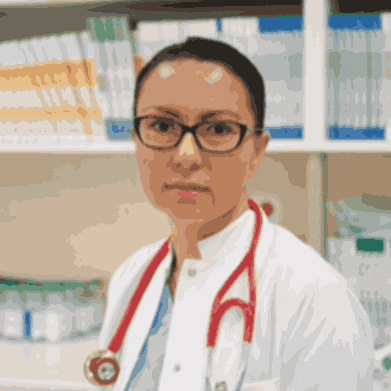
We found the peer review process quick and positive in its input. The support from the editorial officer has been very agile, always with the intention of improving the article and taking into account our subsequent corrections.
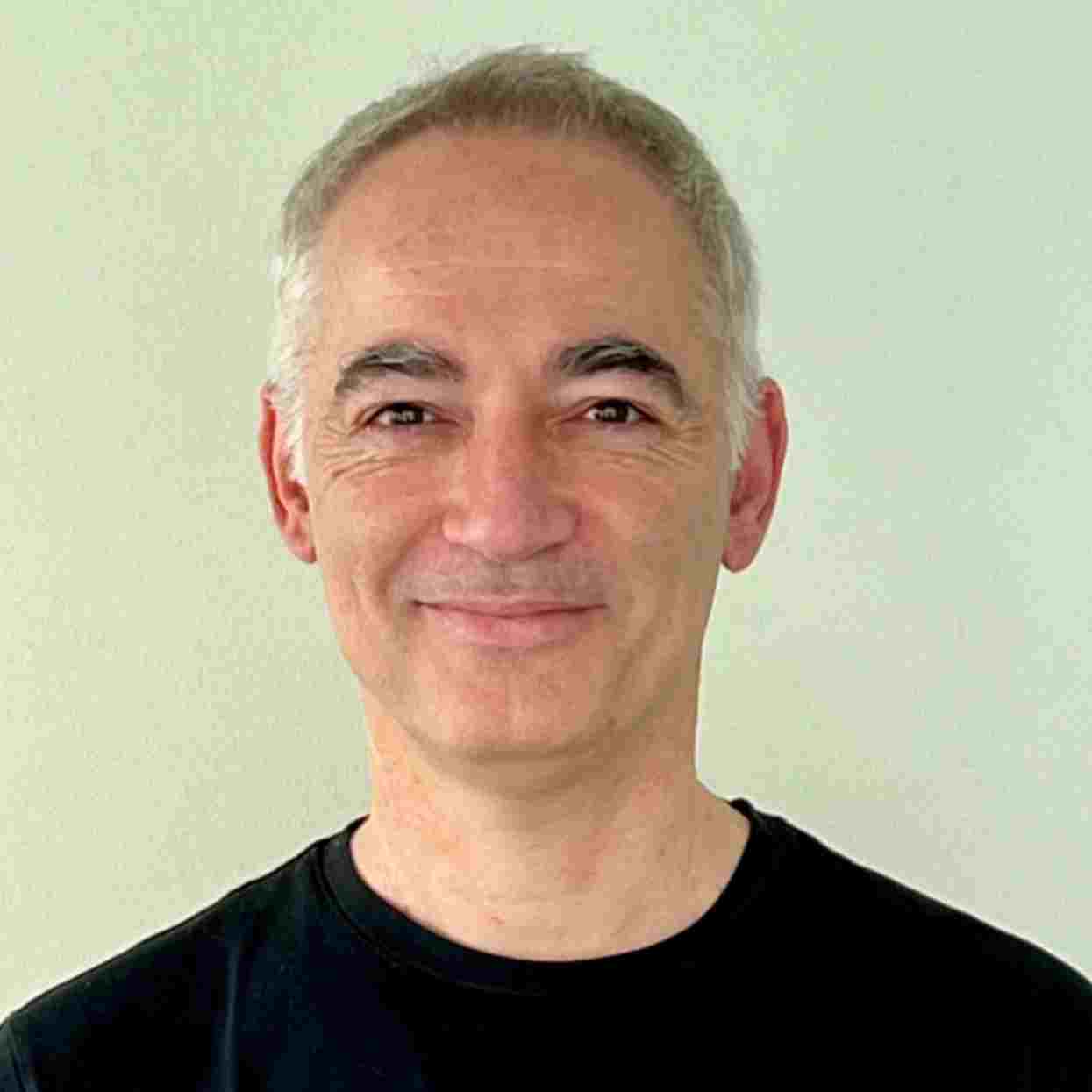
My article, titled 'No Way Out of the Smartphone Epidemic Without Considering the Insights of Brain Research,' has been republished in the International Journal of Clinical Case Reports and Reviews. The review process was seamless and professional, with the editors being both friendly and supportive. I am deeply grateful for their efforts.
To Dear Erin Aust – Editorial Coordinator of Journal of General Medicine and Clinical Practice! I declare that I am absolutely satisfied with your work carried out with great competence in following the manuscript during the various stages from its receipt, during the revision process to the final acceptance for publication. Thank Prof. Elvira Farina

Dear Jessica, and the super professional team of the ‘Clinical Cardiology and Cardiovascular Interventions’ I am sincerely grateful to the coordinated work of the journal team for the no problem with the submission of my manuscript: “Cardiometabolic Disorders in A Pregnant Woman with Severe Preeclampsia on the Background of Morbid Obesity (Case Report).” The review process by 5 experts was fast, and the comments were professional, which made it more specific and academic, and the process of publication and presentation of the article was excellent. I recommend that my colleagues publish articles in this journal, and I am interested in further scientific cooperation. Sincerely and best wishes, Dr. Oleg Golyanovskiy.
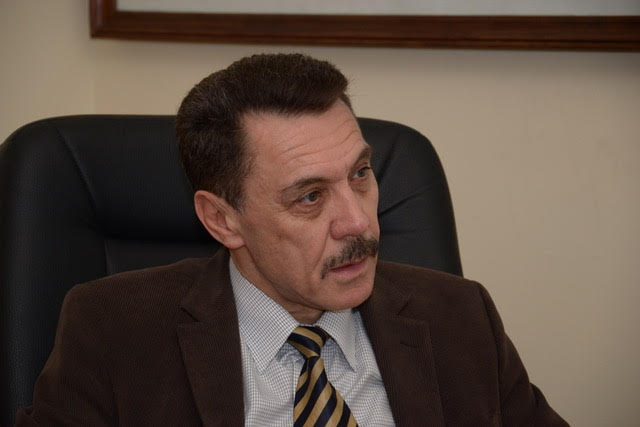
Dear Ashley Rosa, Editorial Coordinator of the journal - Psychology and Mental Health Care. " The process of obtaining publication of my article in the Psychology and Mental Health Journal was positive in all areas. The peer review process resulted in a number of valuable comments, the editorial process was collaborative and timely, and the quality of this journal has been quickly noticed, resulting in alternative journals contacting me to publish with them." Warm regards, Susan Anne Smith, PhD. Australian Breastfeeding Association.

Dear Jessica Magne, Editorial Coordinator, Clinical Cardiology and Cardiovascular Interventions, Auctores Publishing LLC. I appreciate the journal (JCCI) editorial office support, the entire team leads were always ready to help, not only on technical front but also on thorough process. Also, I should thank dear reviewers’ attention to detail and creative approach to teach me and bring new insights by their comments. Surely, more discussions and introduction of other hemodynamic devices would provide better prevention and management of shock states. Your efforts and dedication in presenting educational materials in this journal are commendable. Best wishes from, Farahnaz Fallahian.
Dear Maria Emerson, Editorial Coordinator, International Journal of Clinical Case Reports and Reviews, Auctores Publishing LLC. I am delighted to have published our manuscript, "Acute Colonic Pseudo-Obstruction (ACPO): A rare but serious complication following caesarean section." I want to thank the editorial team, especially Maria Emerson, for their prompt review of the manuscript, quick responses to queries, and overall support. Yours sincerely Dr. Victor Olagundoye.

Dear Ashley Rosa, Editorial Coordinator, International Journal of Clinical Case Reports and Reviews. Many thanks for publishing this manuscript after I lost confidence the editors were most helpful, more than other journals Best wishes from, Susan Anne Smith, PhD. Australian Breastfeeding Association.

Dear Agrippa Hilda, Editorial Coordinator, Journal of Neuroscience and Neurological Surgery. The entire process including article submission, review, revision, and publication was extremely easy. The journal editor was prompt and helpful, and the reviewers contributed to the quality of the paper. Thank you so much! Eric Nussbaum, MD
Dr Hala Al Shaikh This is to acknowledge that the peer review process for the article ’ A Novel Gnrh1 Gene Mutation in Four Omani Male Siblings, Presentation and Management ’ sent to the International Journal of Clinical Case Reports and Reviews was quick and smooth. The editorial office was prompt with easy communication.
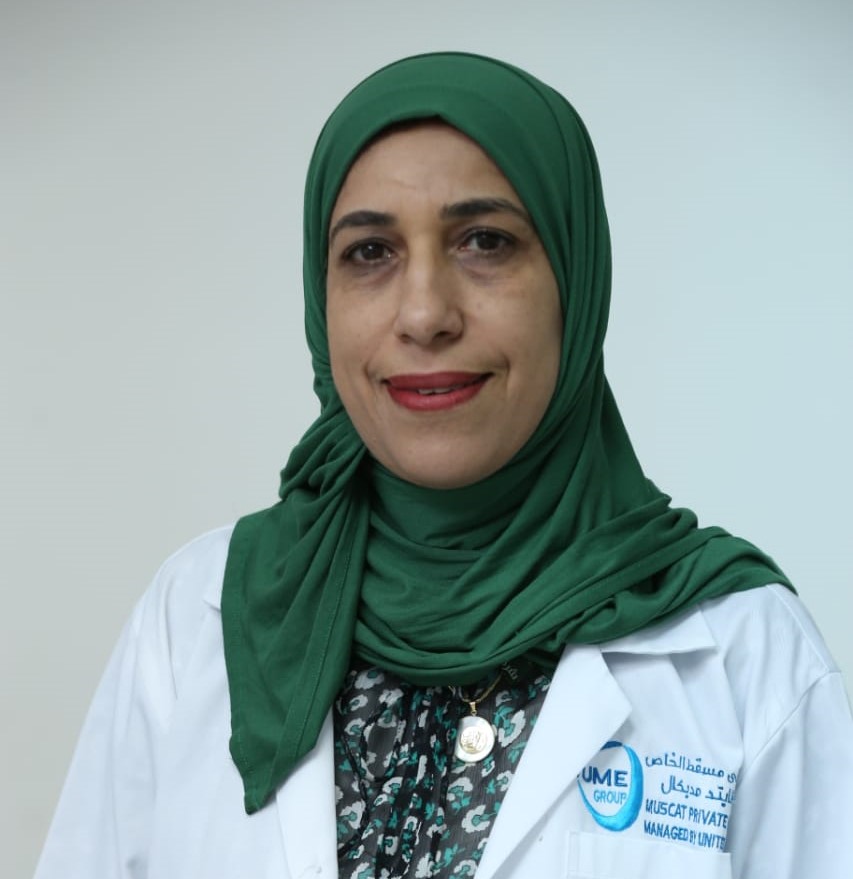
Dear Erin Aust, Editorial Coordinator, Journal of General Medicine and Clinical Practice. We are pleased to share our experience with the “Journal of General Medicine and Clinical Practice”, following the successful publication of our article. The peer review process was thorough and constructive, helping to improve the clarity and quality of the manuscript. We are especially thankful to Ms. Erin Aust, the Editorial Coordinator, for her prompt communication and continuous support throughout the process. Her professionalism ensured a smooth and efficient publication experience. The journal upholds high editorial standards, and we highly recommend it to fellow researchers seeking a credible platform for their work. Best wishes By, Dr. Rakhi Mishra.

Dear Jessica Magne, Editorial Coordinator, Clinical Cardiology and Cardiovascular Interventions, Auctores Publishing LLC. The peer review process of the journal of Clinical Cardiology and Cardiovascular Interventions was excellent and fast, as was the support of the editorial office and the quality of the journal. Kind regards Walter F. Riesen Prof. Dr. Dr. h.c. Walter F. Riesen.

Dear Ashley Rosa, Editorial Coordinator, International Journal of Clinical Case Reports and Reviews, Auctores Publishing LLC. Thank you for publishing our article, Exploring Clozapine's Efficacy in Managing Aggression: A Multiple Single-Case Study in Forensic Psychiatry in the international journal of clinical case reports and reviews. We found the peer review process very professional and efficient. The comments were constructive, and the whole process was efficient. On behalf of the co-authors, I would like to thank you for publishing this article. With regards, Dr. Jelle R. Lettinga.

Dear Clarissa Eric, Editorial Coordinator, Journal of Clinical Case Reports and Studies, I would like to express my deep admiration for the exceptional professionalism demonstrated by your journal. I am thoroughly impressed by the speed of the editorial process, the substantive and insightful reviews, and the meticulous preparation of the manuscript for publication. Additionally, I greatly appreciate the courteous and immediate responses from your editorial office to all my inquiries. Best Regards, Dariusz Ziora

Dear Chrystine Mejia, Editorial Coordinator, Journal of Neurodegeneration and Neurorehabilitation, Auctores Publishing LLC, We would like to thank the editorial team for the smooth and high-quality communication leading up to the publication of our article in the Journal of Neurodegeneration and Neurorehabilitation. The reviewers have extensive knowledge in the field, and their relevant questions helped to add value to our publication. Kind regards, Dr. Ravi Shrivastava.

Dear Clarissa Eric, Editorial Coordinator, Journal of Clinical Case Reports and Studies, Auctores Publishing LLC, USA Office: +1-(302)-520-2644. I would like to express my sincere appreciation for the efficient and professional handling of my case report by the ‘Journal of Clinical Case Reports and Studies’. The peer review process was not only fast but also highly constructive—the reviewers’ comments were clear, relevant, and greatly helped me improve the quality and clarity of my manuscript. I also received excellent support from the editorial office throughout the process. Communication was smooth and timely, and I felt well guided at every stage, from submission to publication. The overall quality and rigor of the journal are truly commendable. I am pleased to have published my work with Journal of Clinical Case Reports and Studies, and I look forward to future opportunities for collaboration. Sincerely, Aline Tollet, UCLouvain.

Dear Ms. Mayra Duenas, Editorial Coordinator, International Journal of Clinical Case Reports and Reviews. “The International Journal of Clinical Case Reports and Reviews represented the “ideal house” to share with the research community a first experience with the use of the Simeox device for speech rehabilitation. High scientific reputation and attractive website communication were first determinants for the selection of this Journal, and the following submission process exceeded expectations: fast but highly professional peer review, great support by the editorial office, elegant graphic layout. Exactly what a dynamic research team - also composed by allied professionals - needs!" From, Chiara Beccaluva, PT - Italy.

Dear Maria Emerson, Editorial Coordinator, we have deeply appreciated the professionalism demonstrated by the International Journal of Clinical Case Reports and Reviews. The reviewers have extensive knowledge of our field and have been very efficient and fast in supporting the process. I am really looking forward to further collaboration. Thanks. Best regards, Dr. Claudio Ligresti
Dear Chrystine Mejia, Editorial Coordinator, Journal of Neurodegeneration and Neurorehabilitation. “The peer review process was efficient and constructive, and the editorial office provided excellent communication and support throughout. The journal ensures scientific rigor and high editorial standards, while also offering a smooth and timely publication process. We sincerely appreciate the work of the editorial team in facilitating the dissemination of innovative approaches such as the Bonori Method.” Best regards, Dr. Giselle Pentón-Rol.
